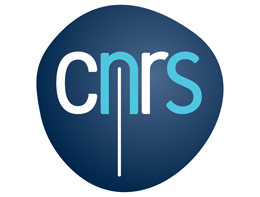Infrastructure
(short name)
CNRS Infrastructure Environmental Observatory Littoral (EOL) coastal buoy
(Environmental Observatory Littoral (EOL) coastal buoy)
Installation
(short name)
Environmental Observatory Littoral (EOL) coastal buoy
(EOL)
Location
Location:Bay of Villefranche-sur-mer, Ligurian Sea

Coordinates/Routes
Bottom depth
80m
Legal name of organisation
CENTRE NATIONAL DE LA RECHERCHE SCIENTIFIQUE CNRS
Country
France
Contact
https://data.coriolis-cotier.org/
CNRS Infrastructure: Environmental Observatory Littoral (EOL) coastal buoy
Location:Bay of Villefranche-sur-mer, Ligurian Sea Website: http://data.coriolis-cotier.org
Equipped with a package of sensors (within a seabird mooring profiler) near surface with RT
transmission. Solar panels and a cabin large enough to install power hungry instruments and a profiler that allows
measurements in the water column (80 m depth). Hourly SBE19 data for T, S, fluorescence, DO at 1.5 m depth. A
fixed pH sensor is also deployed.
This autonomous plateform is deployed at the mouth of the bay of Villefranche-sur-mer, Ligurian sea. It is moored over rocky bottom depth of 90 m. The rade is a great place to work at sea thanks to its protected position against dominant winds : even if the weather is not good outside, the buoy can be reached and the instrumentation suffer less. As no continental shelf is present in this area, this site is under offshore influences, as well for physical parameters as for biological ones. The EOL buoy is equipped with a package of sensors (within a seabird mooring profiler) near surface with real-time transmission to CORIOLIS and EMODNET (Copernicus, CMEMS). EOL buoy has solar panels and a cabin large enough to install power hungry instruments and a profiler that allows measurements in the water column (80 m depth) several times a day. Its equipment comprises : a meteorological station, a winch dedicated to ctd (temperature and salinity at the moment, extension to others sensors in the future) profiles. Core oceanographic parameters (temperature, salinity, fluorescence, dissolved oxygen) are acquired with a SeaBird SBE19 on an hourly basis at a fixed depth (1.5 m). A fixed pH sensor is also deployed.
Equipped with a package of sensors (within a seabird mooring profiler) near surface with RT
transmission. Solar panels and a cabin large enough to install power hungry instruments and a profiler that allows
measurements in the water column (80 m depth). Hourly SBE19 data for T, S, fluorescence, DO at 1.5 m depth. A
fixed pH sensor is also deployed.
Modality of access under this proposal: MoA1/MoA2 UA: 8 weeks Modality used to declare access costs: TA-AC
Services currently offered: Contributes to the network COAST HF(IR ILICO). Offers
validated time series data, and high frequency data are implemented within a long biochemical time series (from Point B
site).
Support offered under this proposal: This infrastructure is available for researchers to conduct projects on ecosystems
dynamics and on the evolution of the Mediterranean Sea within the context of climatic changes and/or anthropogenic
forcings.
